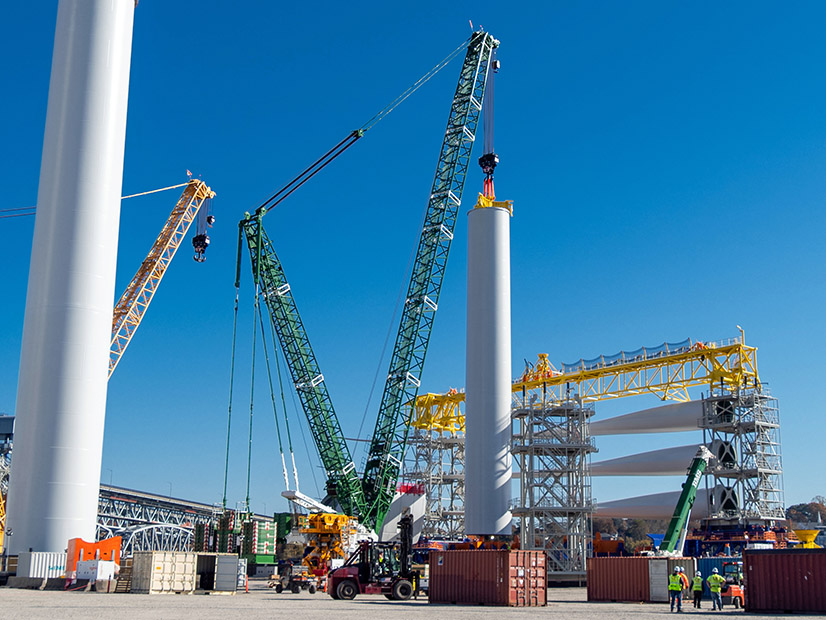The U.S. Department of Treasury and the IRS on Thursday released proposed guidance on the 45X Advanced Manufacturing Production Credit, which is available to producers of wind and solar components, inverters, battery components and critical minerals.
The tax credit is part of the Inflation Reduction Act, which the department said already is creating manufacturing jobs.
“These new investments across industries and throughout clean energy supply chains are creating good-paying jobs and driving down the cost of clean energy for Americans,” Secretary of the Treasury Janet Yellen said in a statement. “New manufacturing investments are disproportionately going to communities that have lacked opportunity and are key to increasing long-run growth and the productivity of our economy.”
Treasury released a notice of proposed rulemaking (NOPR) on the 45X tax credit, which proposes clarifying definitions and confirms credit amounts for the components it covers. It proposes definitions for key terms meant to incentivize domestic production and clarifies the circumstances under which the credit can be claimed.
The NOPR includes safeguards against fraud, waste and abuse, including ways to avoid double-credits for the same component, crediting of activities that add no value and extraordinary circumstances in which clean energy components are produced but never used productively.
The tax credits will be in full effect through the end of this decade and, starting for components sold in 2030, they will ramp down to 75%, then 50% in 2031, 25% in 2032 and be phased out entirely in 2033. Only the 50 applicable minerals will be eligible for the 45X credit after 2032.
Solar energy components include modules, photovoltaic cells, photovoltaic wafers, solar grade polysilicon, torque tubes, structural fasteners and polymeric backsheets. Modules or photovoltaic cells would get a credit based on their nameplate capacity in direct current watts under standard testing conditions.
Wind energy components include blades, nacelles, towers, offshore wind foundations and related offshore wind vessels. Eligible ships would be those purpose-built or retrofitted for installing offshore wind turbines, while wind tower components would get credits based on the capacity of the completed turbines.
Both utility-scale and distributed-energy-scale inverters would be eligible for the tax credits, the NOPR said. Eligible battery components include electrode active materials, battery cells and battery modules.
Treasury also released new analysis from its economists using data from the Massachusetts Institute of Technology and the Rhodium Group showing how the IRA already has accelerated clean energy manufacturing.
Since the bill was passed, 76% of investment dollars in clean energy manufacturing have gone to counties with average weekly wages below the U.S. average; 66% are in counties with college graduation rates below the U.S. aggregate rate; 54% of investment went to counties with lower employment levels than average; and 69% went to counties with incomes below the median.
The American Clean Power Association welcomed the NOPR, noting that over the past 16 months the clean energy sector has announced 112 new manufacturing facilities that will employ more than 41,000 workers.
“Today’s guidance is a critical next step for U.S. manufacturers as they work to make announced facilities a reality,” said ACP Chief Advocacy Officer JC Sandberg. “By creating and expanding supply chains to make clean energy technologies here at home, we will strengthen America’s energy security, create good-paying American jobs and boost the nation’s economy.”
American Council on Renewable Energy Executive Vice President José Zayas also welcomed the new guidance, which he said would help clean energy manufacturing to continue growing.
“The inclusion of key components, including emerging battery technologies and offshore wind vessels, in addition to prior guidance unlocking the direct pay option for the 45X credit, provides needed clarity for our sector as we work toward achieving the enhanced domestic manufacturing base we need to meet the growing demand for clean and renewable power, secure our grid, lower costs and maximize American competitiveness,” Zayas said.
Advanced Energy United also welcomed the guidance, while highlighting that it includes recycled content and allows for innovative technologies to qualify.
“By permitting recycled content, Treasury has further incentivized the development of a circular clean energy supply chain, something fossil fuels can never achieve, while also helping make imported content into American-made resources,” said AEU Managing Director Harry Godfrey. “By allowing new and innovative technologies, like permitting DC-optimized inverter systems to qualify as microinverters, Treasury is ensuring that this policy encourages, rather than stifles, innovation in this dynamic industry.”




